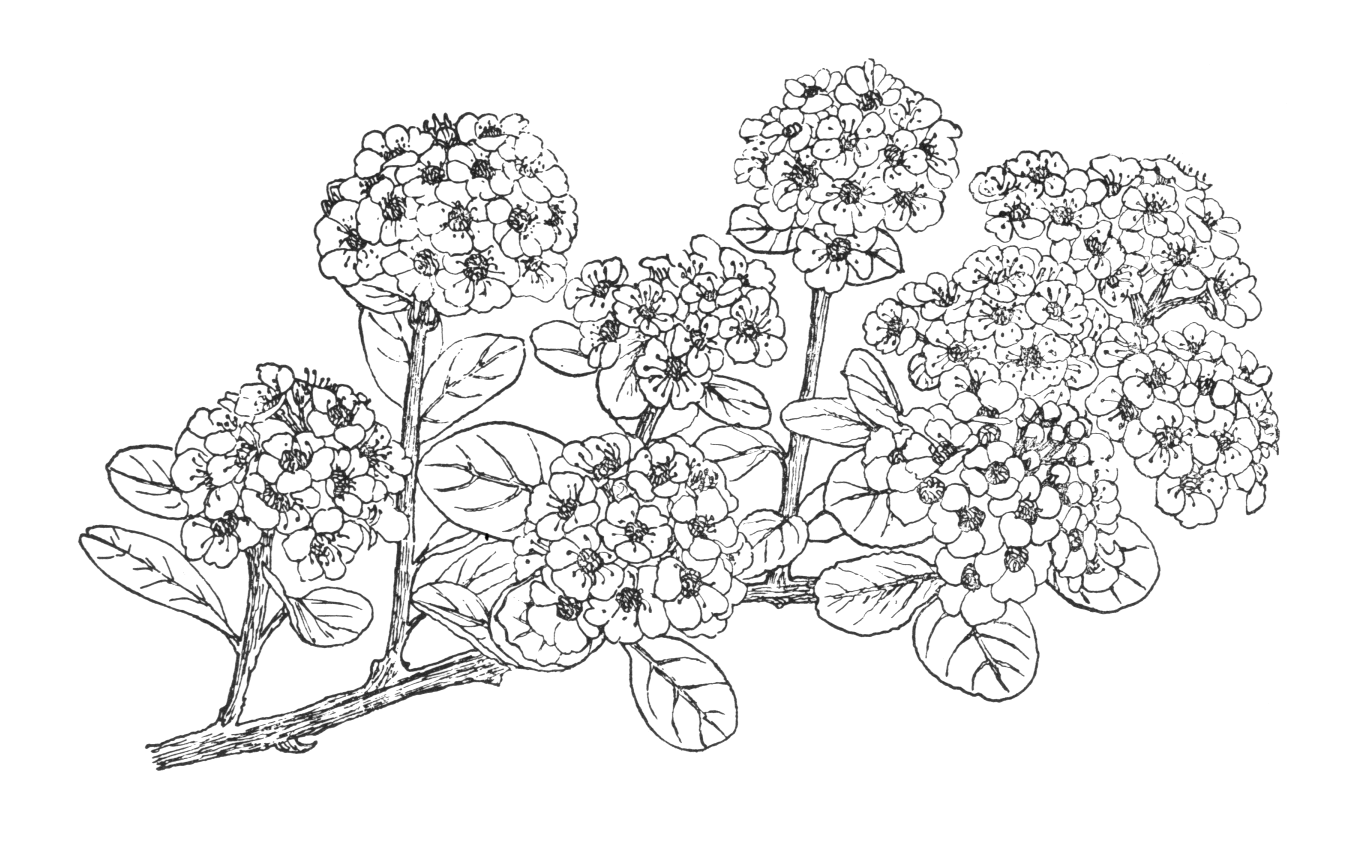Spiraea nipponica
Credits
Article from Bean's Trees and Shrubs Hardy in the British Isles
Recommended citation
'Spiraea nipponica' from the website Trees and Shrubs Online (treesandshrubsonline.
Genus
Synonyms
- S. bracteata Zab.
Infraspecifics
Other taxa in genus
- Spiraea alpina
- Spiraea arcuata
- Spiraea 'Arguta'
- Spiraea bella
- Spiraea betulifolia
- Spiraea × brachybotrys
- Spiraea calcicola
- Spiraea cana
- Spiraea canescens
- Spiraea cantoniensis
- Spiraea chamaedryfolia
- Spiraea chinensis
- Spiraea crenata
- Spiraea decumbens
- Spiraea douglasii
- Spiraea gemmata
- Spiraea henryi
- Spiraea hypericifolia
- Spiraea japonica
- Spiraea longigemmis
- Spiraea 'Margaritae'
- Spiraea media
- Spiraea miyabei
- Spiraea mollifolia
- Spiraea myrtilloides
- Spiraea prunifolia
- Spiraea rosthornii
- Spiraea salicifolia
- Spiraea × sanssouciana
- Spiraea sargentiana
- Spiraea thunbergii
- Spiraea tomentosa
- Spiraea trichocarpa
- Spiraea trilobata
- Spiraea × vanhouttei
- Spiraea veitchii
- Spiraea yunnanensis
A deciduous shrub of rounded, bushy habit, growing 4 to 8 ft high, the branches, leaves, and flower-stalks quite glabrous; young wood reddish. Leaves very broadly obovate or oval, sometimes nearly round, 1⁄2 to 1 in. long, sometimes entire, but usually with a few broad teeth at the rounded apex; stalk 1⁄6 to 1⁄8 in. long. Flowers borne in June, pure white, 1⁄3 in. across, crowded densely in rounded or conical clusters, 1 to 11⁄2 in. wide. Each cluster is borne at the end of a leafy twig, 11⁄2 to 3 in. long, springing from the wood of the previous year; petals overlapping. The synonym refers to the bracts on the flower-stalks, which are leafy and conspicuous on the outside of the inflorescence, but present throughout. Bot. Mag., t. 7429.
Native of Japan (for introduction see ‘Rotundifolia’). It is sometimes injured by late frosts, but when these are escaped, few June-flowering shrubs are more lovely. The individual flowers are beautifully formed, and the clusters are all borne on the upper side of the horizontal or arching branches. It is perfectly hardy, but needs liberal conditions at the root, even more than the majority of spiraeas do. The great thing is to get a comparatively few long shoots rather than a crowd of small twiggy ones. Old shoots should be removed as soon as they produce nothing but twiggy shoots; vigorous plants produce so much new wood that all flowered stems can be cut out.
'Rotundifolia'
This is the typical state of the species, as described above. It was introduced by Siebold to his nursery at Leyden but was not generally available in commerce until Messrs Lemoine acquired stock and distributed it shortly before 1882 (S. rotundifolia alba Hort.; S. media var. rotundifolia Nichols.). S. nipponica Maxim. is simply a renaming of S. media var. rotundifolia of Nicholson, i.e., the Siebold clone; Maximowicz also cited a wild-collected specimen, which too had rather broad leaves. It is this round-leaved clone that is figured in the Botanical Magazine and received an Award of Merit in 1955.'Snowmound'
Leaves narrower than in the typical round-leaved form, being narrowly oblong-obovate, 1 to 1{1/2} in. long and {3/8} to {1/2} in. or slightly more wide on the strongest shoots, around {5/8} by {1/4} in. under the flower-clusters. Everything said in praise of S. nipponica above applies equally or perhaps in greater measure to this spiraea, which in good, moist soil will grow to 4 or 5 ft high and more in width in three years. It has been confused with var. tosaensis.var. tosaensis (Yatabe) Mak.
Synonyms
S. tosaensis Yatabe

